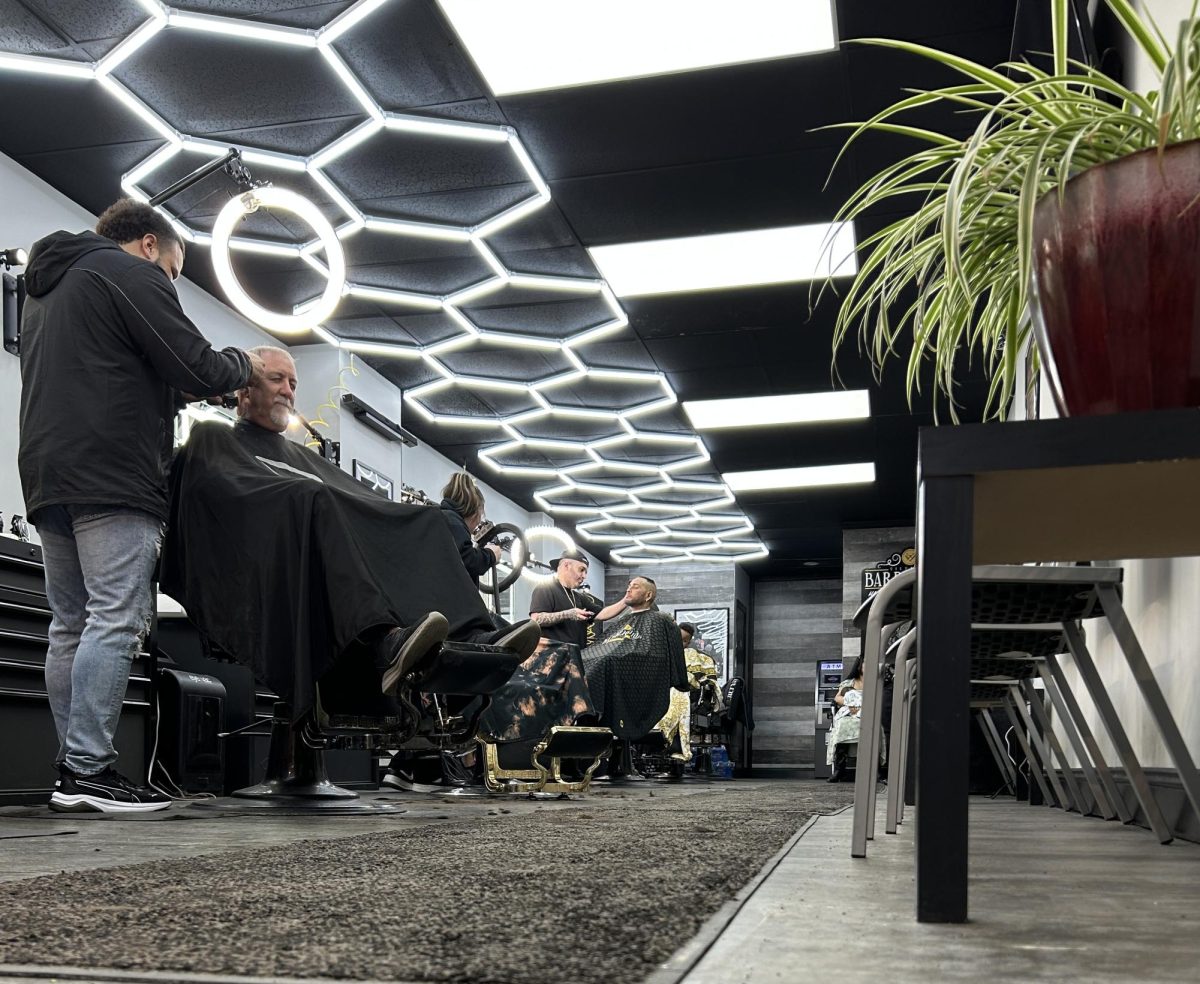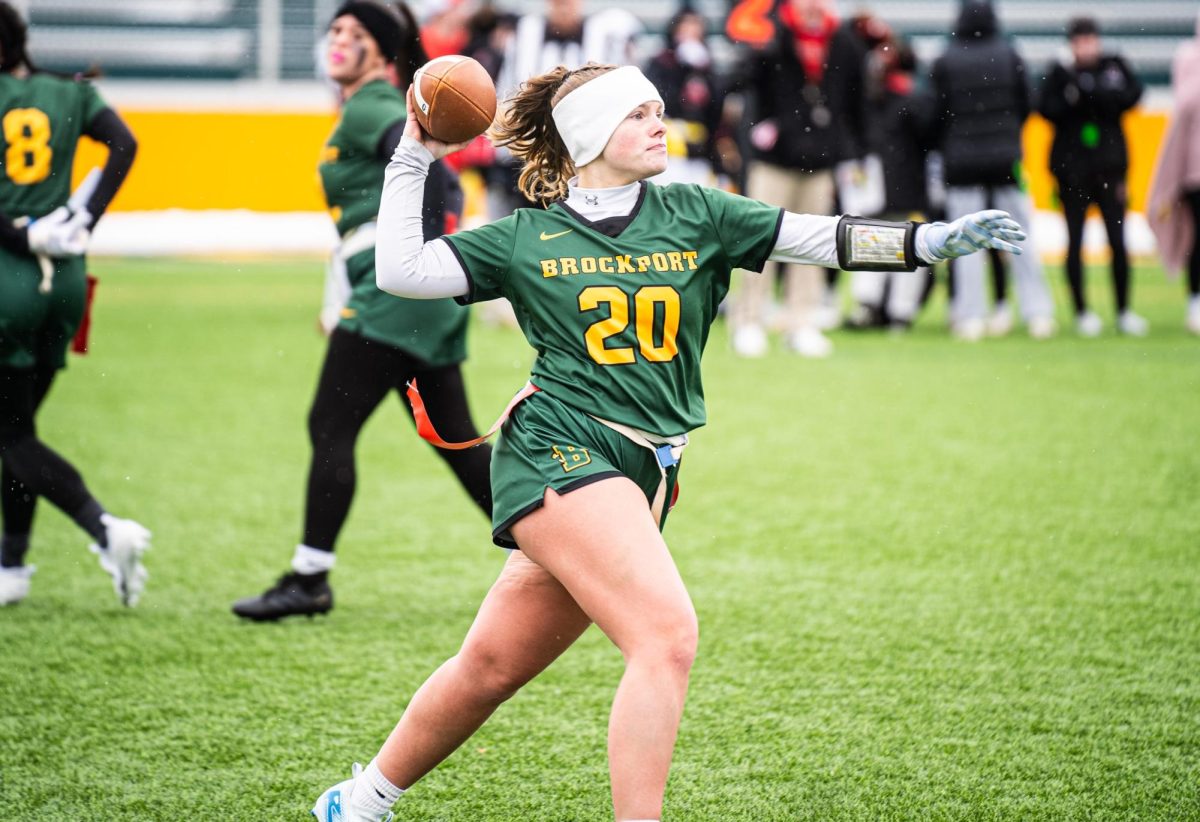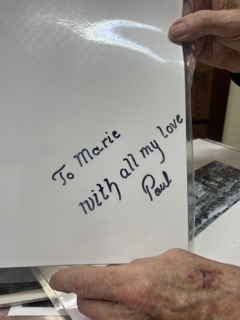When it comes to sports, everyone sees the athletes, the coaches and the eye-catching performance they put on, but what people don’t see is the hard, behind the scenes work to make that performance happen. That’s where athletic trainers come in, the unsung heroes, the heartbeat of sports. Without athletic trainers helping athletes be in their best shape and relieving the stress of coaches, sports on any level may not exist.
“Athletic trainers mean everything to me,” Brockport women’s basketball senior guard Shannon Blankenship said. ” I tore both of my ACLs back-to-back in high school my freshman and sophomore year, so I relied a lot on my athletic trainer with my physical therapy. In college, I sprained my ankle my freshman year and injured my quad my sophomore year. Then last season I tore three major ligaments in my ankle last season and Sheryl who is our current athletic trainer helped me come back from that process and I did rehab every day in the athletic training room with her. So, injuries have been a part of my story since I was younger than high school and athletic trainers have been people I relied on a lot from a physical standpoint, but also a mental standpoint because they’ve been the people I’ve talked to through some of the difficulties I face mentally when I am injured.”
Athletic trainers are specialists in the health care industry who support individuals, mostly athletes, with the prevention and treatment of muscle and bone injuries. One of the multiple athletic trainers at SUNY Brockport is Sheryl Charlton-Smith who graduated from Brockport in 2002 and is now in her second year here as an athletic trainer after spending 14 years at the high school level. Smith believes there is more to an athletic trainer then just a definition in a book.

“To me being a trainer is being able to get people back to what they enjoy doing,” Charlton said. “Having played sports growing up my whole life I know how important it is to be able to stay healthy, be on the field, and doing those things you enjoy doing. I got into athletic training because I enjoy helping people. I knew I still wanted to be a part of sports, but I knew that I wasn’t going to be an athlete for the rest of my life. So, this was a way to get the best of both worlds.”
Smith works with the Brockport men and women’s basketball teams along with men’s soccer and men’s lacrosse. One of the biggest things an athletic trainer needs to do for their job is build trust with the team, without that it’s hard to help an athlete at all, especially when you come in after a previous trainer.
“Trust is a big part of it, especially since this is only my second year here at Brockport, so you have some shoes to fill,” Charlton said. “You’re always coming in after somebody and they have expectations of what they (athletes) liked about that other person, so you’re coming in and trying to figure out your role and how you’re going to fit in.”
It’s difficult to build trust with anyone, but Charlton explains that the best way to build trust with people is to be as open and honest as possible.
“It’s just being open with them, being honest with them, being straight forward with them and not beating around the bush or sugarcoating things,” Charlton said. “Then trying to get to know them on a personal level too and trying to make yourself a part of that team, a part of that family. Let them know you’re here for them, you’re not here with the sole purpose of trying to take them from their sport, you want them to be playing their sport.”
Blankenship is one of the many athletes Charlton has built trust with at Brockport. Last year, Blankenship injured her ankle at Cortland on January 6th, 2024. The team doctor said she wasn’t going to come back and play the rest of the season, but that changed as Blankenship made her return February 2nd, 2024, at New Paltz just before playoffs started. Blankenship trusted and followed Charlton’s lead and without her she may have not made it back on the court.

“I had no idea what that was going to look like at all,” Blankenship said. “I was told I wasn’t coming back; I didn’t think I was coming back, but as I had experiences with other injuries, I just followed the process, and I trusted Sheryl to follow the process, and I did come back playing better. It was one of those things where no one knew what the answer was and then slowly as I started coming back, Sheryl was like ‘Shannon you might be okay, you might be able to comeback,’ and I did everything I needed to do. I did my homework when I wasn’t with her, and I listened to her, and she was able to get me on the floor when we had a team doctor telling me that wasn’t going to happen. It was honestly so cool to defy those odds.”
That is just one of many stories’ athletes have about athletic trainers and the rehab process. When it comes to rehab and physical therapy there is more than just healing the physical side of your body, there’s also a battle with the mental side. For Charlton, it’s about being with the athlete every step of the way.
“The mental side is a huge piece of it, especially for somebody who’s never been injured before and they’re going through it for the first time it’s doomsday for them, they immediately think the worst,” Charlton said. “So, you have to keep trying to stay positive, encourage them and guide them through each step of the way.”
Physical therapy is a long process. It can take a long time to come back from injury, and if an athlete rushes back into action, it can cause a worst injury. For Charlton, the best way to come back from an injury is taking it step-by-step and to not look too far ahead because it causes athletes to lose focus on the process and make it even more difficult to play again.
“Then giving them daily goals, like ‘this is what we’re working towards today’ and then give them weekly goals. Don’t immediately think about that final goal,” Charlton said. “Give them basic goals like baby steps to meet throughout the progress and I tend to think that helps as they’re going through their rehab. If they’re thinking about the finish line and not thinking about what it’s going to take to get there it’s going to be a lot harder for them to get there.”
As a head coach, athletic trainers are like an extended part of the coaching staff. Trainers not only help athletes get back from injury, but they’re also in constant communication with the coaches to let them know how their athletes are doing. For Brockport women’s basketball head coach Corrine Jones, coaches and trainers not only work together, but learn with each other as well.

“It’s a collaboration, we help each other a lot,” Jones said. “It’s a team thing where I don’t ever want to step on their toes and I don’t want them to step on mine, we’re not learning from each other, we’re learning alongside each other.”
Coach Jones will even bring Charlton into meetings instead of her assistant coaches for better communication, not only with each other, but with the student athletes as well.
“I brought Sheryl into a handful of meetings when we talk basketball,” Jones said. “I’ve had injured student athletes during them so instead of bringing my assistant coaches in, I’ll bring Sheryl in, and we’ll talk with those athletes about treatment plans and how to communicate with her and me.”
Athletic trainers are supposed to help athletes when they are at their lowest and from time to time, it can be emotional. For Charlton, when emotions come into play, you have to put them to the side so you can be at your best for the athlete.
“The calmer you are in how you manage that situation, the easier it’s going to be for the athlete to get through that situation,” Charlton said. “It can get emotional, especially when you know the kids and see them grow up basically, so when you see something like that happen it can be tough. But you have to put that aside in the moment and stay focused on what you’re doing. I’m here to get them back out there and through the process.”
The appreciation and importance of athletic trainers do not go unnoticed. Without trainers, sports teams would not be the same and it could even feel empty.
The athletes and the coaches are under the spotlight every time they step on that court or field, but they wouldn’t be able to step on that court or field without athletic trainers. They work behind closed doors, every day providing the best care for student athletes to perform at their best. Smith and other trainers around the world are the heartbeat of sports who work behind the scenes, just like a heart behind the rib cage, and if it was to ever stop beating, sports may not exist.


























